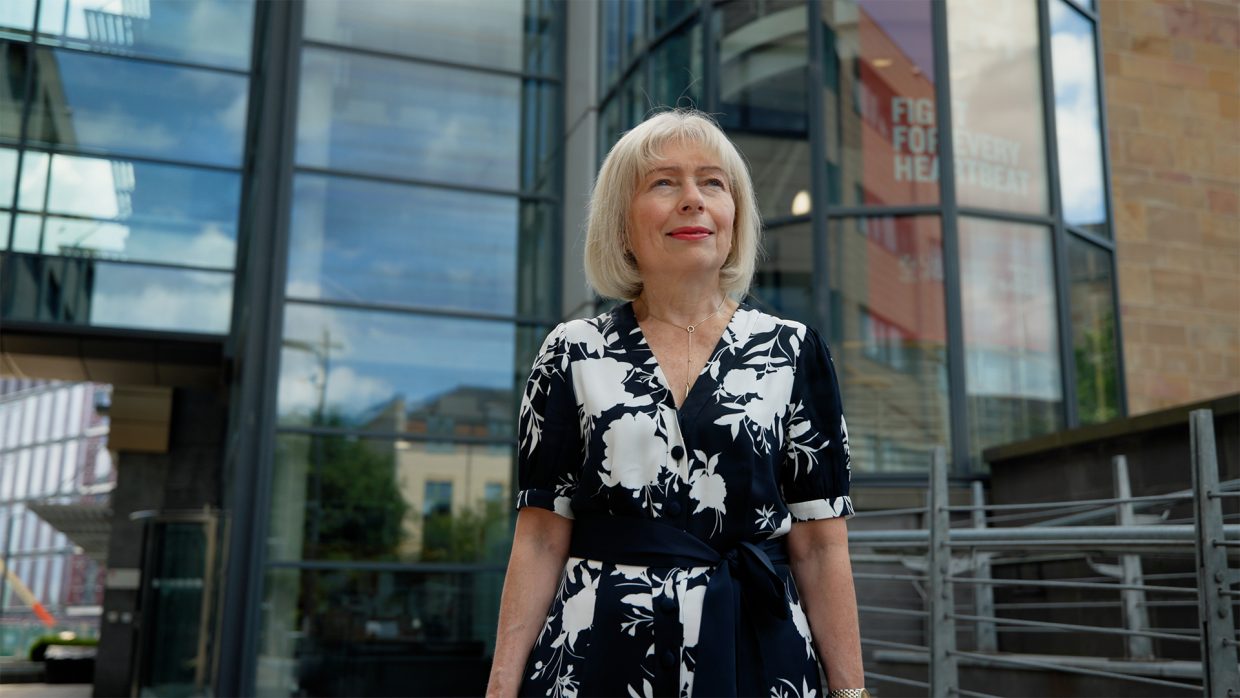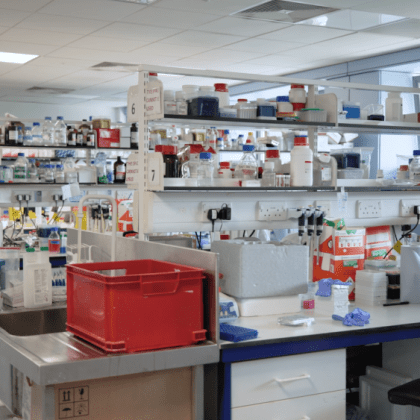‘The most exciting and rewarding career I know’
Cambridge Prisms: Precision Medicine editor-in-chief Dame Anna Dominiczak offers wise words to young women considering a career in science

‘Young women should follow their dreams. Just go for it!’
That is the inspirational advice of Dame Anna Dominiczak – Regius Professor of Medicine at Glasgow University, the first female chief scientist for health in Scotland, and a trailblazer in cardiovascular science and medicine – as we approach the United Nations International Day of Women and Girls in Science.
The global celebration on 11 February, which honours women’s significant achievements in science and places a much-needed focus on girls entering science, technology, engineering, and mathematics (STEM) careers, comes during an era when women have been more likely to receive an undergraduate degree than their male counterparts – but, in STEM, were only earning the qualification at half the rate of men.
The initiative is aimed at allowing the world to recognise the role women and girls already play in science, promoting STEM careers to future generations of women, and educating men on their role in encouraging and mentoring women and girls in schools and the workplace to pursue their technical and scientific passions.
Dame Anna, who last year became editor-in-chief of the Cambridge Prisms: Precision Medicine journal, had something of a tough start to her academic career. As she began to make her way in the world of medicine in the early 1980s, having studied at Poland’s Gdańsk Medical University, her home country was plunged into chaos as – against a backdrop of a economic recession, food and fuel shortages, widespread strikes and violent political turmoil – martial law was imposed. Anna and her husband Marek decided to move to the UK, specifically to the city of Glasgow, to pursue their dreams.
Genes and dreams
Despite a warm welcome in Glasgow, Anna was struck by the fact that the university and the medical profession in Scotland at the time was hugely male-dominated – in stark contrast to her medical school in Poland, where roughly half of the professors had been female. She recalls: ‘There was one woman professor in the entire medical faculty of the University of Glasgow, and just one woman consultant in my first training hospital. It was absolutely striking to me.’
Anna recalls that a career in STEM was ‘in her genes’: ‘My mother was a professor of medicine, and there were quite a few senior women scientists in Poland when I became a student. In fact I decided to study medicine mid-way through my high school. Studying medicine was exciting and interesting; I understood early that I would like to study a few subjects deeply, and that academic medicine was the best way to do so.’
Her early interest was in hypertension (high blood pressure) and cardiovascular prevention. Anna’s doctoral thesis was on the role of calcium in cells of patients with high blood pressure, while in more recent years she has had an interest in genes that contribute to high blood pressure and other cardiovascular conditions. This led to her current passion for precision medicine – in all its aspects, not just cardiovascular disease.
Despite her enthusiasm for science Anna says women in STEM, and especially in medicine, faced many challenges 30 years ago – and to a much greater degree in Glasgow than in her home city of Gdańsk: “First, there were very few role models and women mentors weren’t there at all. Second, the hours were very long, and part-time training posts did not exist. Third, many male bosses just did not know how to support ambitious young women in their departments. We were still asked to make coffee and our bright ideas were quickly attributed to a male colleague participating in the same meeting. And the biggest challenge of all was how to combine children and an academic career, with the frequently-asked question at my talks to the final year medical students: “When the right or best time is to have a baby?”
Ambition and optimism
While globally the figures are moving in the right direction, there is still some way to go.
According to the UK advocacy group STEM Women, while the percentage of female graduates with core STEM degrees is steadily growing, the split is still just 26%. This figure is also translated in the female STEM workforce, with women making up 24% compared to around 10% in the early 1970s.
Dame Anna has also seen many changes since her early days: “Things have improved a lot, I think conditions at work have improved for all – not just for women. There is proper mentorship, and part-time training is available to all. Young colleagues are not expected to work 100 hours per week, and families and children are accepted as part of the normal life of any young academic. Very importantly, there is much more sharing of parental duties.” Indeed, alongside her own stellar career, Dame Anna brought up a family and is now a very proud grandmother.
For Dame Anna, the rewards of a career in science have been manifold: “I have been useful as a doctor, but also have been able to pursue my scientific passions; to go deep into the mechanisms of diseases. I hope I have also been useful as a leader in academia, publishing, and more recently as a scientific advisor. I have been lucky enough that my work has been doing things that I loved.
For girls and young women considering a career in science, Dame Anna imparts some thoughtful but ultimately optimistic guidance: “The career in STEM, and especially in academic medicine, is the most exciting and rewarding career I know. It needs ambition, hard work and realistic planning around how to combine work and family, but it is worth it.
“Young women should follow their dreams and be the best they can be in their chosen careers. Women are great doctors, great scientists, and great academics. Just go for it.”







I agree. Science is a wonderful career!